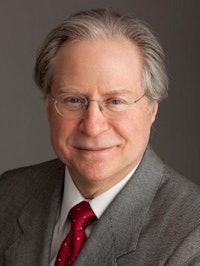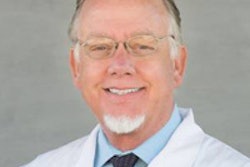
How would you feel if an insurance company told you that, based on clinical studies, it was instituting risk-based preventive dental care? That day is here, as some insurance companies are changing their reimbursement patterns after the recent release of a study of more than 5,000 patients who were followed for 16 years and stratified for genetic risk, smoking, and diabetes (Journal of Dental Research, August 2013, Vol. 92:8, pp. 694-701).
The study found that almost half of the patients (47%) did not benefit from a second cleaning during a year's time. Almost as many (43%) did benefit from a second cleaning, and the remaining 10% benefitted from two or more cleanings per year.
 Ken Kornman, DDS, PhD.
Ken Kornman, DDS, PhD.
One of the researchers and executives heavily involved in this genetics research is Ken Kornman, DDS, PhD. He is the founder and CEO of Interleukin Genetics and has been actively involved in genetics research on common diseases of aging for 20 years. Dr. Kornman has published more than 125 papers in scientific journals, has more than 20 patents, and maintains academic appointments at Harvard University and the University of Michigan.
DrBicuspid.com caught up to him after he spoke at the recent 2014 Personalized Medicine World Conference in San Jose, CA, to ask him about how genetics, personalized medicine, and changing reimbursement patterns will affect the immediate and longer-term future of dentistry.
While the initial reaction of many dentists is to ask why they should stop scheduling a percentage of their patients for two visits a year, Dr. Kornman said that the idea is to look at the "shift in benefit design" that is found in newer, risk-based insurance plans.
"[These plans] will result in some patients being covered for one annual prophy instead of two," he said. "However, other healthy patients, who show no evidence of periodontal disease, will be eligible for two, three, or even four prophies, depending on presence of one or more personal risk factors for disease," he said. "That is the inherent trade-off that enables more care to be delivered to patients at greatest risk."
“Other healthy patients ... will be eligible for two, three, or even four prophies, depending on ... one or more personal risk factors for disease.”
The study suggesting these changes is one of the largest ever conducted in dentistry involving prevention or treatment, Dr. Kornman said. It included more than 5,000 adult patients who saw their general dentist for 16 years (more than 80,000 patient years of data). It explored the role of three leading risk factors for periodontal disease -- smoking, diabetes, and IL-1 genotype -- in patients with no history of periodontitis. In this study, 47% of the patients had none of the risk factors and 53% had at least one risk factor.
"The study concluded that a risk-based, personalized approach that combines genetics with the conventional risk factors of smoking and diabetes can guide more effective preventive care," he said.
The driver behind this is a concept known as personalized medicine, which Dr. Kornman defines as the tailoring of medical treatment to the individual characteristics of each patient -- classifying patients by their susceptibility to a particular disease or their response to a specific treatment. This has become standard practice in the medical world in areas such as the prevention of heart disease and cancer. In dentistry, he noted, it is also practiced with caries management by risk assessment (CAMBRA).
"These medical examples have taught us that, for many patients, knowing their personal disease risk can be compelling," he said.
He also noted that this can be a "significant driver to get the millions of patients who have chosen not to visit regularly to now do so."
In talking with practicing dentists about this study, Dr. Kornman said the most common questions he's heard revolved around practice productivity being negatively affected.
"The study findings suggest that many patients should receive more frequent prophies, not fewer, specifically, those patients at greatest risk," he said. "In the plan now being introduced to the market, some patients will qualify for three or even four prophies based on their personal disease risk."
Crucially, he noted that the study findings do not suggest any change in the frequency of oral examinations, meaning that patients who only need one annual prophy based on their risk factors still receive coverage for two annual examinations.
Dentists are also concerned that fewer visits might affect the ability to detect other diseases, such as caries and oral cancer. In response, Dr. Kornman reiterated that all patients, regardless of their risk factor status, will still receive coverage for two annual examinations.
He noted that the study included tooth loss caused by any factor, including caries, and there was no significant benefit shown whether patients received one prophy or two.
"Additionally, many caries-related events involved fractured crowns or roots that may be the aftermath of large older restorations. These caries-related events are not preventable by prophies," he said.
As for oral cancer, Dr. Kornman said he was aware of no evidence or protocols indicating that more than one annual exam is more effective in detecting oral cancer.



















